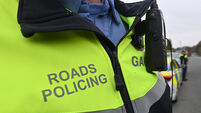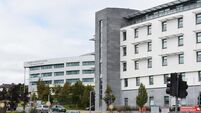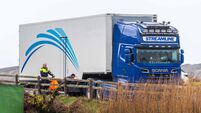Soaring popularity of pedal power leads to 200% rise in spinal injuries

In 2012, around 630 cyclists were injured nationwide, representing the highest number of cycling injuries in a 10 year period.
Research has revealed a staggering 200% increase in spinal cord injury sustained as a result of people cycling.
“We’ve conducted research in both the Mater Hospital and in Mayo General over the last couple of years,” said John Kelly, a registrar specialising in orthopaedic matters at Mayo General Hospital.
“In the Mater Hospital, we have a prospectively maintained database of all referrals to the National Spinal Injuries Unit.
“We looked at all referrals to this unit over four years. We found in 2013 that we had a 200% increase in referrals with spinal cord injuries as a result of cycling.”
According to the data, the majority of those suffering from spinal cord injuries were male (80%), while most of the injuries (70%) related to the cervical spine — an area of the neck that allows people to move their heads in all directions.
“The most worrisome and severe injuries are the higher energy injuries that affect two groups of people — commuters and the weekend cyclists,” said Dr Kelly.
“Last year, there were 12 cycling-related road deaths. Ten of those deaths were due to direct collision with a car or a truck. One was as a result of a fall, and one was hitting a stationary object. And that’s compared to five cycling related deaths in 2013.”
Speaking on Today with Sean O’Rourke on RTÉ Radio 1 , Dr Kelly, who cycles in his spare time, praised the efforts of the Road Safety Authority but said more needs to be done to raise awareness about the dangers faced by cyclists on our roads.
“Lots and lots of people are now cycling and probably the infrastructure hasn’t developed at the same pace and that needs to be addressed,” he said.
Cyclist Eamonn McSweeney spoke about the crash that resulted in the loss of his arm.
Having returned to cycling after a number of years, one day he lost control when his bicycle skidded on some gravel on the side of the road. He hit a crash barrier which his right hand got stuck in, and later had to have his arm removed from just below the elbow.
“Most people are cycling around now on bicycles that the pros would have been cycling maybe 10 years ago at most,” said Mr McSweeney.
“Very, light, very fast.
“If you come off, you can do some real damage as I found out. If I hadn’t been wearing the helmet, I clearly would have taken a severe impact to the front of my head, and if I’d survived that, it would have been a traumatic injury of some description.”
Patrick Kenneally, from Dungarvan, Co Waterford, spoke about two separate accidents he had while cycling — one of which resulted in a hip dislocation and, later, a hip replacement.
“Cyclists have to be careful too,” he said. “Since my accident, I actually treat every car as if it’s going to hit me. Because the last time I didn’t do that, I got hit.”
On-the-spot fines for cyclists committing offences such as breaking red lights, cycling on footpaths, and travelling against the flow of traffic are set to curb dangerous practises on the road, according to the Department of Transport.
While almost 70% of cyclists are against the fines, almost 60% of drivers said fines will benefit all road users, according to a survey.
The fines are due to start this summer, a spokesperson for the department said yesterday.
The survey, compiled by parking and toll tag firm Easytrip, also reveals the majority of motorists think cyclists should undergo a road test before being allowed onto main roads.
Cyclists were split 50/50 on the issue.
The survey found 95% of motorists claimed they had seen a cyclist acting illegally or dangerously on the road.
The most common infractions were cyclists breaking red lights, cycling on footpaths, and failing to wear high visibility clothing.
The vast majority (98%) of cyclists agreed the most commonly broken rule for cyclists is breaking red lights at traffic junctions or pedestrian crossings, followed by failing to make hand signals when turning, and not having the appropriate lights on their bikes.
When cyclists were asked about offences committed by motorists, the most common mishaps were drivers not using their indicators, failing to leave enough space between their car and the kerb, and cutting off a cyclist when turning left.
“I believe that our survey shows, first and foremost, a general lack of understanding or empathy between motorists and cyclists, and understandably these negative attitudes have been a result of their day-to-day experiences on the road,” said Colin Delaney, general manager of Easytrip.
“Our roads are getting busier but there is space on our roads for all and it’s extremely important that we become more courteous and mindful of our fellow road users and remove the ‘them and us’ attitude.”











